Table of Contents
Introduction: The Evolution of Gardening with AI
Gardening has always been a timeless practice, deeply rooted in tradition and human connection with nature. For centuries, gardeners relied on their intuition, experience, and knowledge passed down through generations to cultivate plants. From understanding the seasons to manually preparing soil and managing pests, gardening was a labor-intensive process that required patience, trial and error, and a deep understanding of the environment.
However, traditional gardening methods came with their fair share of challenges. Predicting weather patterns was often unreliable, leading to overwatering or drought-stressed plants. Identifying plant diseases or pests required either expert knowledge or costly consultations. Additionally, planning a garden layout that maximized space and ensured plant compatibility was a time-consuming task, often leaving beginners overwhelmed.
Enter the age of Artificial Intelligence (AI). With the rapid evolution of technology, AI tools are now stepping in to revolutionize the way we approach gardening. These tools are designed to simplify tasks, provide accurate data-driven insights, and make gardening more accessible to everyone, from seasoned horticulturists to first-time plant enthusiasts. By integrating AI into gardening, we are witnessing a shift from guesswork to precision, from manual labor to automation, and from isolated efforts to a connected, data-rich experience.
AI tools can now analyze soil quality, predict weather patterns, diagnose plant diseases, and even design garden layouts tailored to specific needs. This transformation is not just about convenience; it’s about empowering gardeners to achieve better results with less effort, while also promoting sustainable practices. As we delve deeper into this article, we’ll explore how AI is reshaping the gardening landscape and what the future holds for this age-old practice.
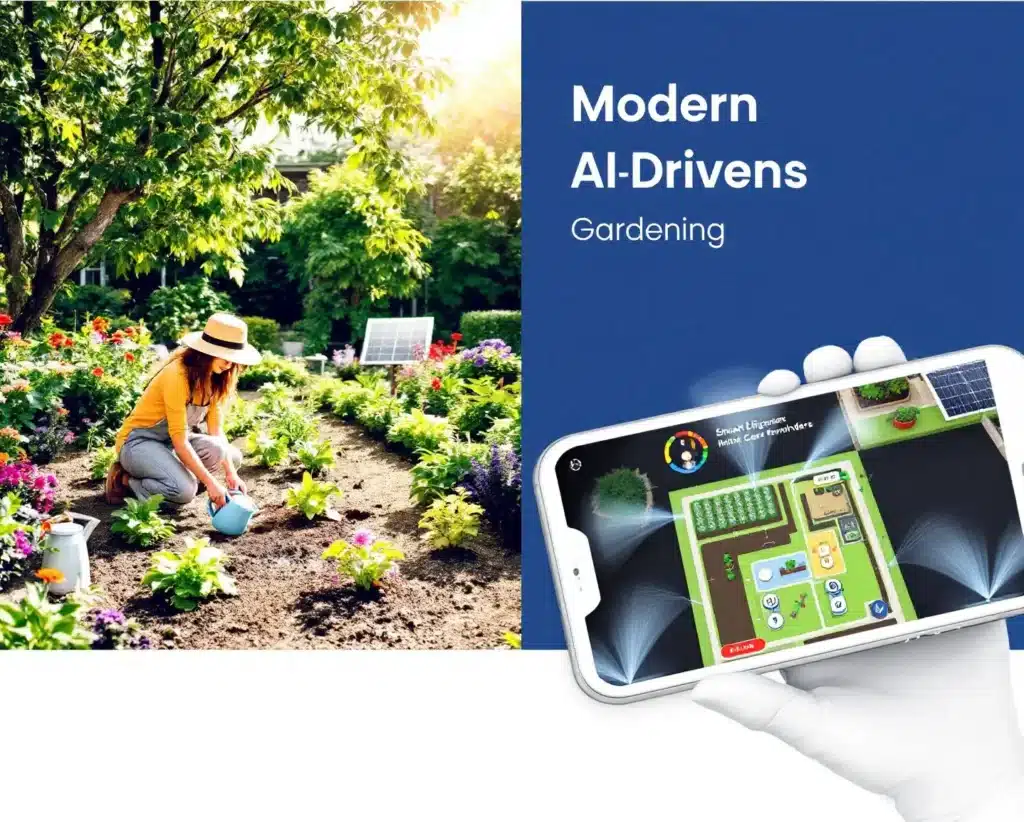

AI Garden Planners: Redefining Garden Design
For generations, garden planning was a meticulous process that required careful thought and manual effort. Traditional gardeners would sketch layouts on paper, measure spaces by hand, and rely on their knowledge of plant compatibility and seasonal cycles to create a thriving garden. While this approach was rewarding, it often left beginners feeling overwhelmed and unsure of where to start. Even experienced gardeners faced challenges in optimizing their garden layouts for space, sunlight, and soil conditions.
Now, with the advent of Gardening with AI, garden planning has been completely transformed. AI-powered garden planners are making it easier than ever to design beautiful, functional gardens tailored to individual needs. These tools use advanced algorithms to analyze factors like available space, local climate, soil type, and even the gardener’s preferences to create personalized layouts. Whether you’re working with a small balcony or a sprawling backyard, AI garden planners can help you maximize your space and ensure that your plants thrive.
One standout feature of these tools is their ability to recommend plant pairings based on compatibility. For example, companion planting—where certain plants benefit each other when grown together—can now be planned with precision. AI tools also provide visual layouts, allowing gardeners to see exactly how their garden will look before they even plant a single seed. This eliminates much of the guesswork and ensures a higher success rate for new gardens.
Popular AI garden planners like Galaxy AI Garden Planner and AIGardenPlanner are leading the way in this space. These tools not only help with layout design but also integrate with other AI features, such as weather data and soil analysis, to provide a comprehensive gardening experience. By using these planners, gardeners can save time, reduce errors, and create gardens that are both productive and visually stunning.
As Gardening with AI continues to evolve, these tools are becoming more intuitive and accessible, making them a game-changer for gardeners of all skill levels. Whether you’re a beginner looking for guidance or an expert seeking to optimize your garden, AI garden planners are redefining what’s possible in the world of gardening.
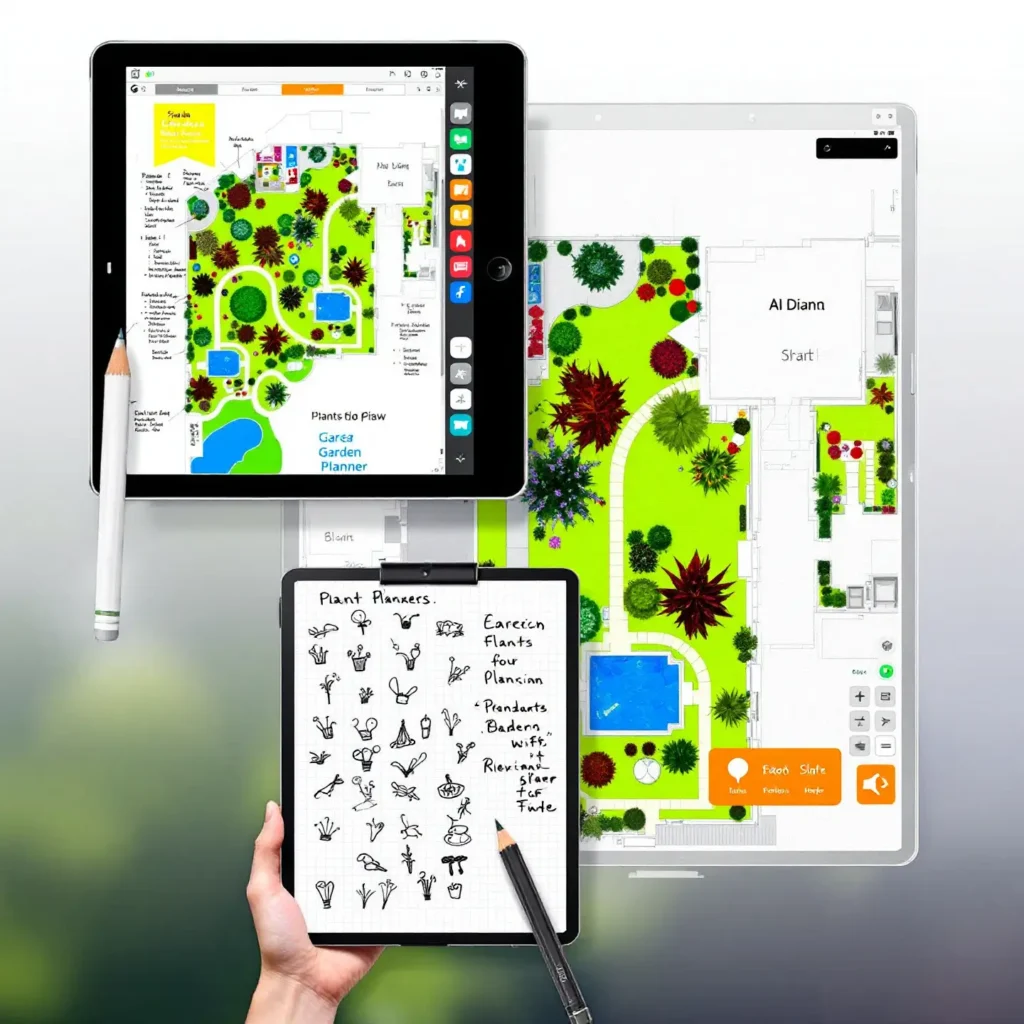

Weather Data Integration: Smart Scheduling for Success
In traditional gardening, understanding and adapting to weather patterns was often a matter of experience and observation. Gardeners relied on almanacs, local knowledge, or simply trial and error to determine the best times for planting, watering, and harvesting. While this approach worked for many, it was far from precise. Sudden weather changes, unexpected droughts, or heavy rains could easily disrupt even the most carefully planned gardens, leading to wasted effort and resources.
With the rise of Gardening with AI, weather data integration has become a game-changer for gardeners. AI tools now use real-time weather data and advanced forecasting models to help gardeners make smarter decisions. These tools analyze local climate conditions, predict temperature fluctuations, and even account for rainfall patterns to create optimized schedules for planting, watering, and other essential tasks.
For example, AI-powered apps like AIGardenPlanner and SmartPlant can notify gardeners when it’s the perfect time to plant specific crops based on upcoming weather conditions. They can also recommend when to water plants, ensuring that you don’t overwater during rainy periods or underwater during dry spells. This level of precision not only saves time and effort but also conserves water and promotes healthier plant growth.
Another exciting feature of AI weather integration is its ability to adapt to long-term climate trends. As climate change continues to impact gardening practices, AI tools can help gardeners adjust their strategies to cope with shifting weather patterns. Whether it’s selecting drought-resistant plants for a hotter climate or planning for an extended growing season, these tools provide invaluable insights that were previously unavailable.
By combining weather data with other AI capabilities, such as soil analysis and garden planning, Gardening with AI is helping gardeners achieve better results with less guesswork. This integration of technology and nature is paving the way for smarter, more sustainable gardening practices that benefit both gardeners and the environment.
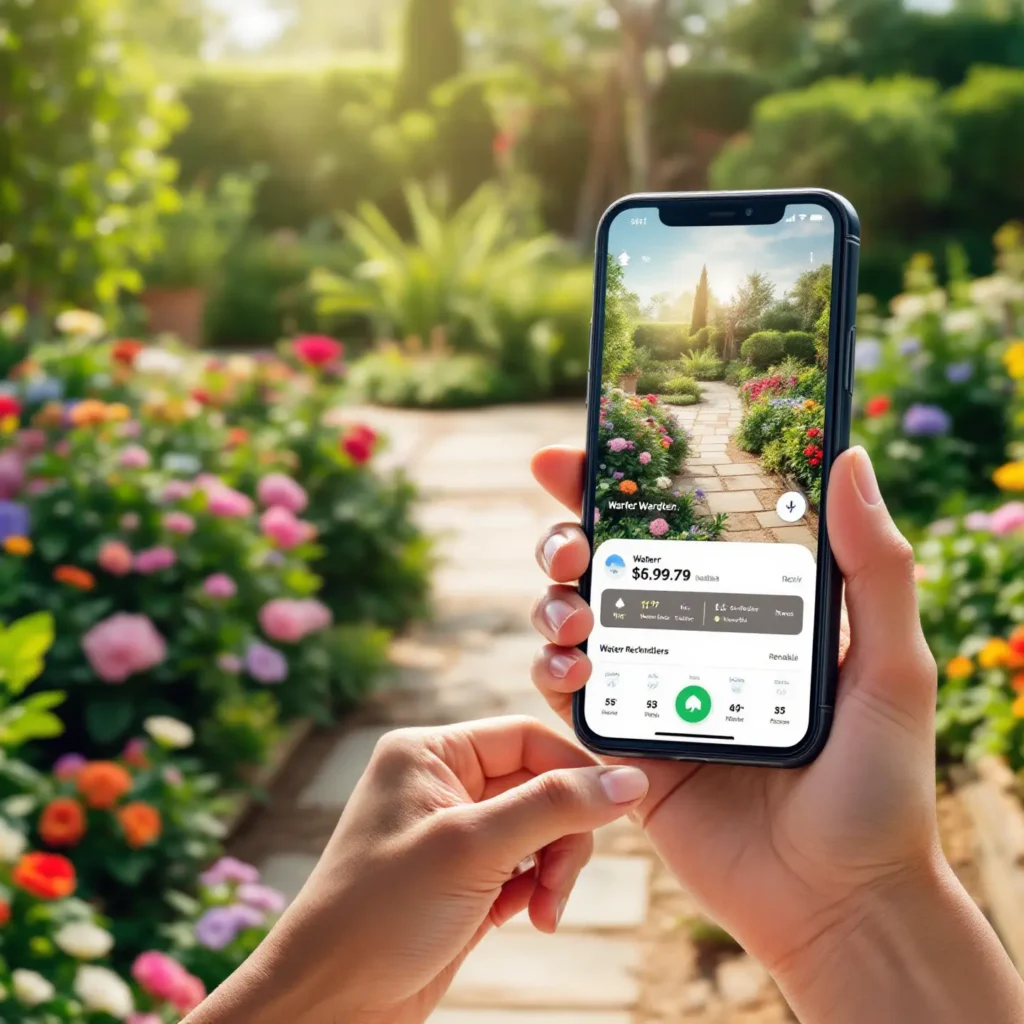

Plant Care and Disease Management: From Guesswork to Precision
Traditionally, plant care and disease management were often a matter of observation, experience, and trial and error. Gardeners would inspect their plants for signs of pests, nutrient deficiencies, or diseases, relying on their knowledge—or sometimes sheer luck—to identify and address the problem. While this hands-on approach fostered a deep connection with plants, it was time-consuming and often led to misdiagnoses or delayed treatments, which could harm plant health and reduce yields.
With the advent of Gardening with AI, plant care and disease management have entered a new era of precision and efficiency. AI-powered tools now allow gardeners to diagnose plant issues in real time, often with just a smartphone camera. Apps like Plantix and SmartPlant use image recognition technology to identify diseases, pests, or nutrient deficiencies by analyzing photos of affected plants. These tools then provide tailored recommendations for treatment, helping gardeners take immediate and effective action.
Beyond diagnostics, AI tools also offer proactive care solutions. For instance, they can monitor plant health through connected sensors that track soil moisture, temperature, and light levels. These sensors feed data into AI systems, which analyze the information and provide actionable insights, such as when to water, fertilize, or adjust lighting conditions. This level of precision ensures that plants receive exactly what they need to thrive, reducing waste and improving overall garden productivity.
Another significant advantage of Gardening with AI is its ability to predict and prevent problems before they occur. By analyzing historical data and current conditions, AI tools can alert gardeners to potential risks, such as pest infestations or nutrient imbalances, allowing them to take preventive measures. This not only saves time and resources but also promotes healthier, more resilient plants.
As AI technology continues to evolve, plant care and disease management are becoming more accessible and effective for gardeners of all skill levels. Whether you’re a beginner struggling to identify a pest or an experienced gardener looking to optimize your plant care routine, AI tools are transforming the way we nurture our gardens, making it easier than ever to achieve success.
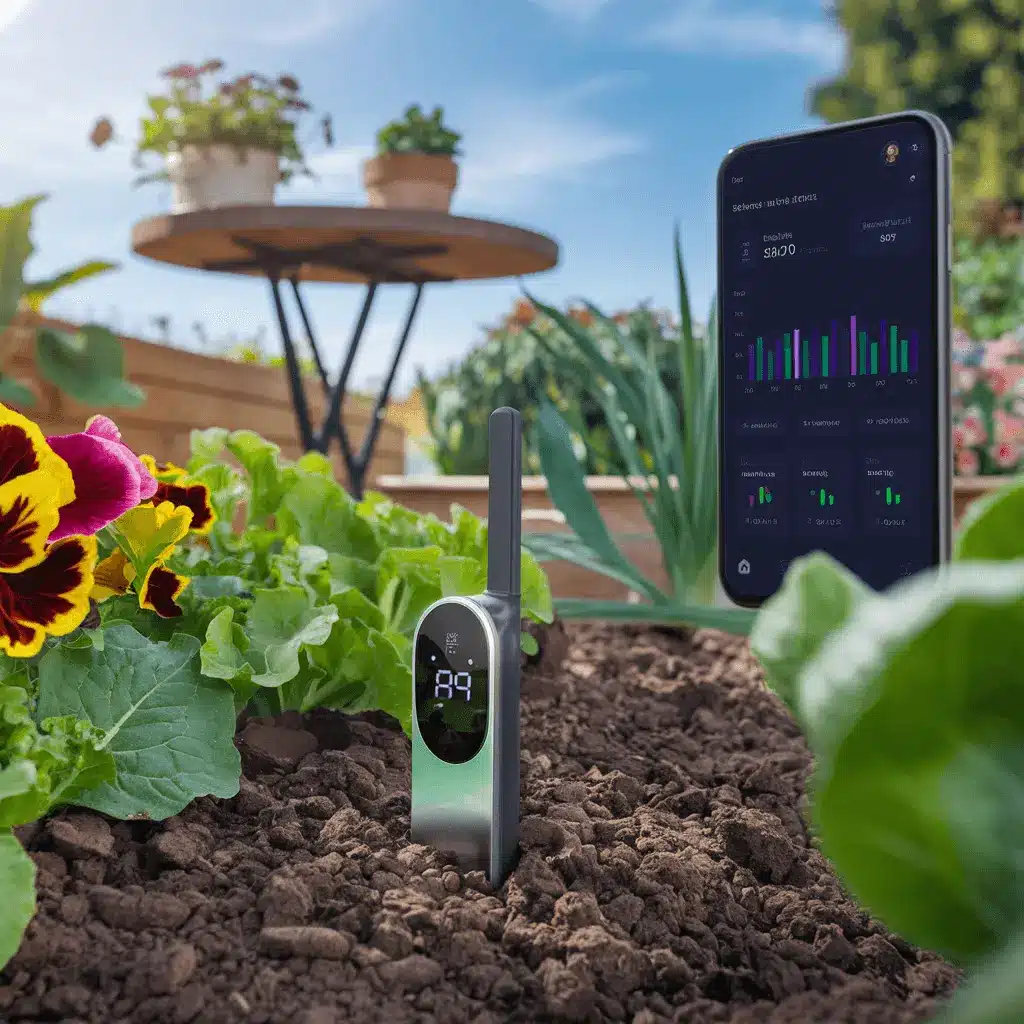

The Future of Gardening: Embracing AI Innovations
As we stand on the cusp of a technological revolution, the future of Gardening with AI looks brighter than ever. While current AI tools already offer incredible benefits—such as garden planning, weather-based scheduling, and plant care diagnostics—the rapid evolution of AI promises even more groundbreaking innovations that could redefine how we interact with our gardens.
One of the most exciting developments on the horizon is the integration of fully automated gardening systems. Imagine a garden where robotic assistants handle tasks like planting, weeding, and harvesting with minimal human intervention. These systems, powered by AI and machine learning, could monitor plant health, adjust irrigation systems, and even apply fertilizers or pest control solutions as needed. This level of automation would not only save time but also make gardening more accessible to people with limited mobility or busy schedules.
Another promising trend is the use of AI to promote sustainable gardening practices. Future AI tools could analyze environmental data to recommend eco-friendly solutions, such as selecting native plants that require less water or identifying organic pest control methods. By helping gardeners reduce their environmental footprint, AI has the potential to play a key role in combating climate change and preserving biodiversity.
AI is also expected to enhance the personalization of gardening experiences. As these tools become more advanced, they will be able to learn from individual gardeners’ preferences and habits, offering tailored advice and recommendations. For example, an AI assistant could suggest plants that match a gardener’s aesthetic tastes, skill level, and local conditions, creating a truly customized gardening journey.
Looking even further ahead, the integration of AI with augmented reality (AR) and virtual reality (VR) could transform how we design and visualize gardens. Gardeners might use AR glasses to see a virtual layout of their garden before planting or use VR to explore different design possibilities in a fully immersive environment. These technologies could make garden planning more intuitive and engaging, especially for beginners.
As the capabilities of AI continue to expand, the possibilities for Gardening with AI are virtually limitless. From fully automated gardens to sustainable solutions and personalized experiences, the future of gardening is set to be smarter, more efficient, and more inclusive than ever before. By embracing these innovations, gardeners can look forward to a new era of creativity, productivity, and connection with nature.
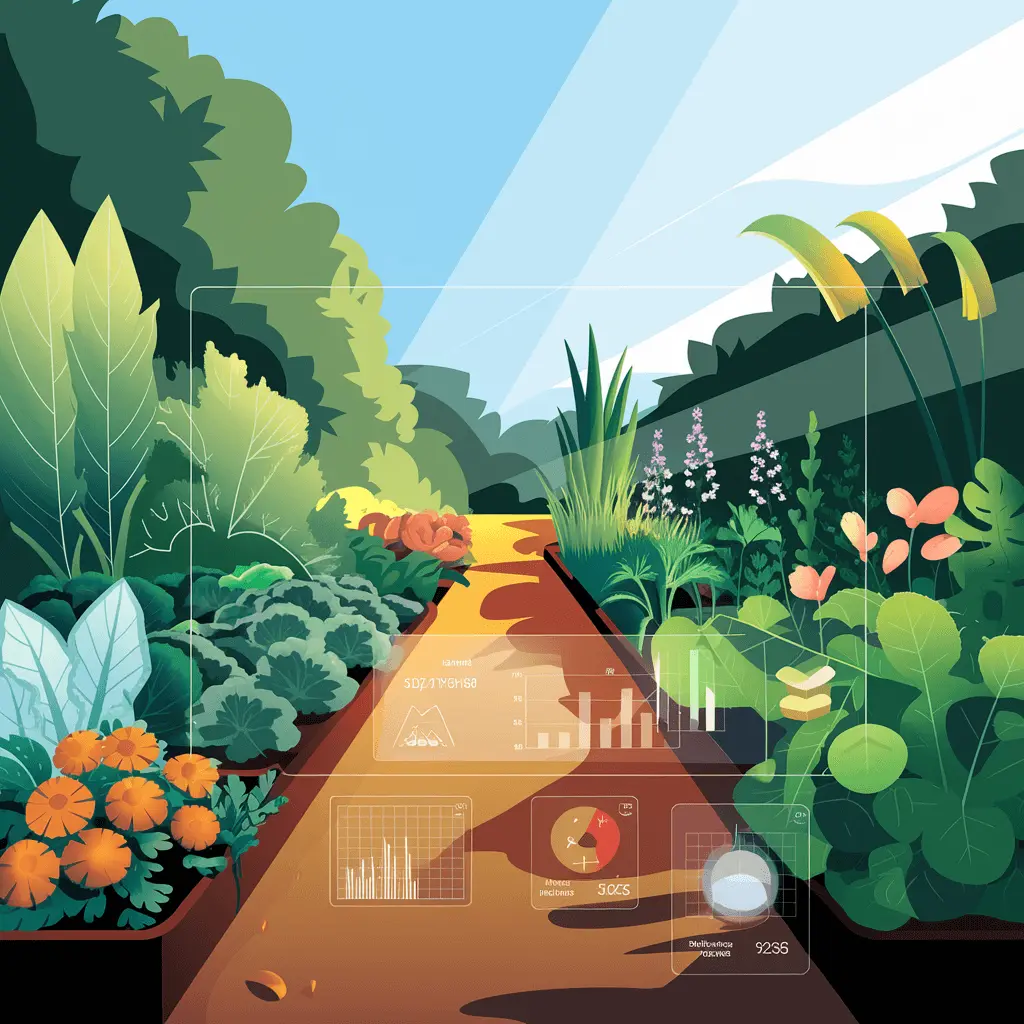

Conclusion: A New Era of Gardening Awaits – Join the Fun!
As we’ve seen, Gardening with AI is no longer just a futuristic dream—it’s here, and it’s transforming the way we connect with our plants and the earth. From planning the perfect garden layout to diagnosing plant problems with the snap of a photo, AI is like having a green-thumbed best friend who never gets tired, never forgets to water, and always knows the weather forecast. (Seriously, who wouldn’t want a gardening buddy like that?)
But let’s be honest—AI isn’t here to replace the joy of getting your hands dirty or the satisfaction of watching your plants grow. It’s here to make gardening easier, smarter, and, dare we say, a little more magical. Imagine a world where your garden texts you, “Hey, I’m thirsty!” or where a robot weeds your flower beds while you sip lemonade in the shade. Okay, maybe we’re not quite there yet, but the possibilities are endless, and the journey is just as exciting as the destination.
Now, here’s the best part: you don’t have to go on this journey alone! Whether you’re a seasoned gardener or someone who’s just managed to keep their first succulent alive (congrats, by the way!), we’d love for you to join our growing community. Let’s share tips, laugh at our gardening fails (we’ve all overwatered at least once), and explore the amazing world of Gardening with AI together.
Head over to our Facebook page [insert link] and become part of the conversation. Share your garden photos, ask questions, or just hang out with fellow plant lovers who are as excited about AI as they are about tomatoes. Together, we can grow smarter, greener, and maybe even a little weirder (in the best way possible).
So, what are you waiting for? Grab your phone, download an AI gardening app, and let’s start planting the future—one smart garden at a time. And don’t forget to tag us in your gardening adventures. We can’t wait to see what you grow!
Looking for more gardening tips? While AI is revolutionizing the way we garden, traditional knowledge is just as important! Check out these helpful articles on lovemyplant.com to complement your gardening journey:
- 10 Amazing Benefits of Indoor Green Plants You Need to Know – Perfect for those just starting out
- Wine Barrels for Planting: A Beginner’s Guide to a Unique Colurful Garden –
- How You Can Turn Your Backyard Into a $10K/Month Business – This is special if you’re into business 😉
Explore these resources and combine traditional gardening wisdom with the power of AI to create your dream garden!

1 thought on “Top 5 Ways to Gardening with AI: From Tradition to Innovation”